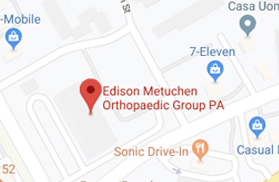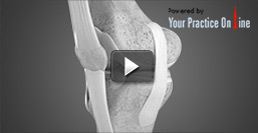Elbow Fractures
An elbow fracture results from a break or crack in one or more of the bones that make up the elbow joint. There are two types of elbow fractures:
- Extra-articular fractures that include intercondylar fractures, supracondylar fractures, epicondylar fractures, and condyle fractures
- Intra-articular fractures that include trochlea and capitellum fractures, radial head, and proximal ulnar fractures
The elbow is a complex hinge joint formed by the articulation of three bones- humerus, radius, and ulna. The upper arm bone or humerus connects the shoulder to the elbow forming the upper portion of the hinge joint. The lower arm consists of two bones- the radius and the ulna. These bones connect the wrist to the elbow forming the lower portion of the hinge joint. A joint capsule surrounds the elbow joint which contains lubricating fluid called synovial fluid.
The three joints of the elbow are
- Ulnohumeral joint, the junction between the ulna and humerus
- Radiohumeral joint, the junction between the radius and humerus
- Proximal radioulnar joint, the junction between the radius and ulna
The elbow is held in place with the support of various soft tissues including:
- Cartilage
- Tendons
- Ligaments
- Muscles
- Nerves
- Blood vessels and
- Bursae
The various movements of an elbow joint are:
- Flexion
- Extension
- Pronation
- Supination
Causes
Elbow fractures can be caused by:
- A direct hit or blow to the elbow joint
- Falling on an outstretched arm
- A twisting injury of the elbow
The differential diagnoses of elbow fracture include sprains, strains, or dislocations.
Signs and symptoms
The common symptoms of an elbow fracture include:
- Swelling, tenderness, stiffness, and bruising around the elbow joint
- Restricted movement of the elbow
- Pain at the elbow joint while stretching
- Possible damage to nerves and/or artery
- Decreased range of motion
- Possible numbness in finger, hand or forearm
- Popping or cracking sound may be felt in the elbow
Healing of a fracture depends on the type and severity of the fracture sustained as well as the age and health status of the individual.
Diagnosis
Your doctor diagnoses elbow fracture by performing a physical examination. Other investigations that help diagnose an elbow fracture include:
- X-ray of the elbow is a radiological test carried out to look for abnormalities in bone structures of the joint
- CT (Computerized tomography) scan of the elbow is done to obtain detailed views of the bone.
- MRI (Magnetic resonance imaging) of the elbow is done to view the bone and surrounding soft tissues.
Treatment
Treatment varies according to the severity of the fracture and involves the following:
- Rest the elbow until the fracture has healed completely which may take about 8-10 weeks.
- Non-surgical or conservative treatment such as a cast or splint may be used to stabilize the joint if the bones are not displaced. Generally, casts are used to treat fractures in pediatric patients as they experience less muscle stiffness compared to adults.
- Your doctor may prescribe pain medications to keep you comfortable, and antibiotics to prevent infection.
- Physical therapy will be recommended by your orthopedic surgeon to increase range of motion and to strengthen your elbow muscles.
- Surgery is considered in cases of displaced bones or unstable fractures, which require realignment and stabilization of the bone fragment.
 Menu
Menu






